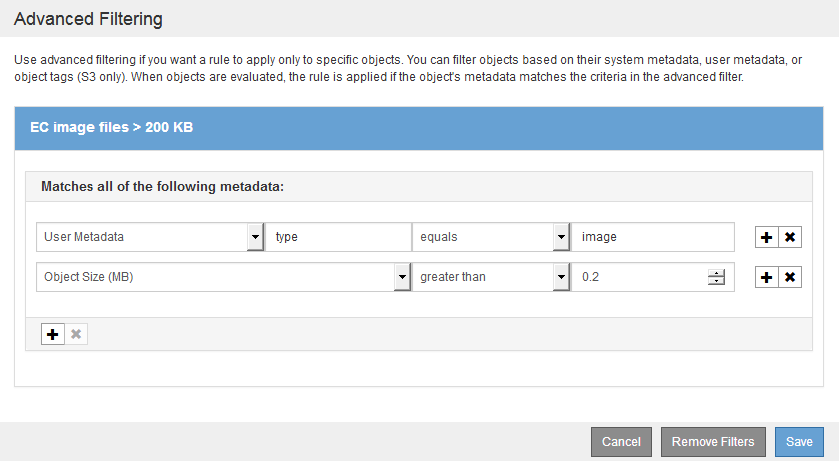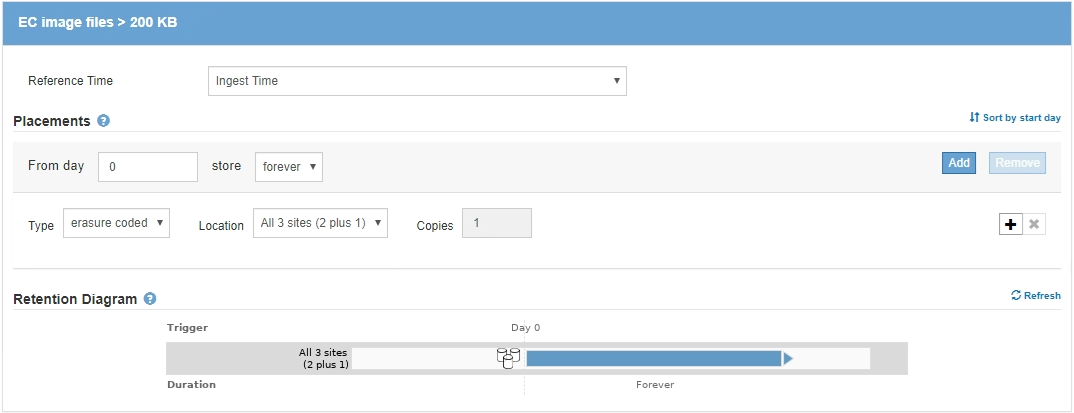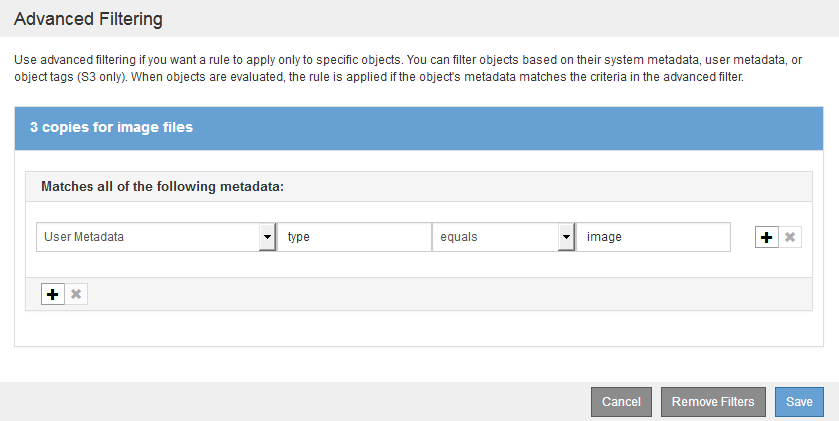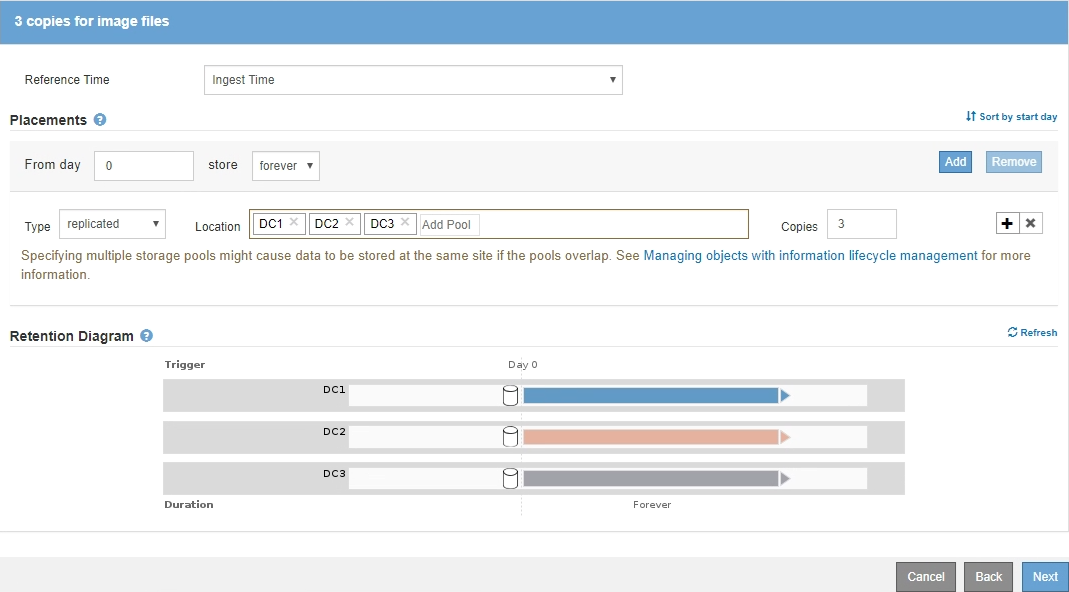Example 3: ILM rules and policy for better protection for image files
 Suggest changes
Suggest changes


You can use the following example rules and policy to ensure that images larger than 200 KB are erasure coded and that three copies are made of smaller images.

|
The following ILM rules and policy are only examples. There are many ways to configure ILM rules. Before activating a new policy, simulate the proposed policy to confirm it will work as intended to protect content from loss. |
ILM rule 1 for example 3: Use EC for image files larger than 200 KB
This example ILM rule uses advanced filtering to erasure code all image files larger than 200 KB.
| Rule definition | Example value |
|---|---|
Rule Name |
EC image files > 200 KB |
Reference Time |
Ingest Time |
Advanced Filtering for User Metadata |
User Metadata type equals image files |
Advanced Filtering for Object Size |
Object Size (MB) greater than 0.2 |
Content Placement |
Create a 2+1 erasure-coded copy using three sites |

Because this rule is configured as the first rule in the policy, the erasure-coding placement instruction only applies to images that are larger than 200 KB.

ILM rule 2 for example 3: Replicate 3 copies for all remaining image files
This example ILM rule uses advanced filtering to specify that image files be replicated.
| Rule definition | Example value |
|---|---|
Rule Name |
3 copies for image files |
Reference Time |
Ingest Time |
Advanced Filtering for User Metadata |
User Metadata type equals image files |
Content Placement |
Create 3 replicated copies in all Storage Nodes |

Because the first rule in the policy has already matched image files larger than 200 KB, these placement instructions only apply to image files 200 KB or smaller.

ILM policy for example 3: Better protection for image files
In this example, the ILM policy uses three ILM rules to create a policy that erasure codes image files larger than 200 KB (0.2 MB), creates replicated copies for image files 200 KB or smaller, and makes two replicated copies for any non-image files.
This example ILM policy includes rules that perform the following:
-
Erasure code all image files larger than 200 KB.
-
Create three copies of any remaining image files (that is, images that are 200 KB or smaller).
-
Apply the default rule to any remaining objects (that is, all non-image files).



